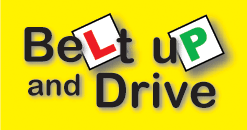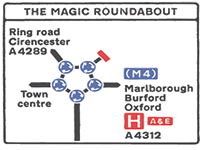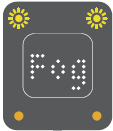Pass Plus
New drivers are statistically more likely to be involved in an accident within their first two years of legalised driving. With this in mind, the Pass Plus scheme was introduced to help newly qualified drivers tackle some of the aspects of driving that were not included whilst learning to drive.
The PassPlus course gives new drivers the chance to improve their skills and make savings on their car insurance.The Pass Plus scheme is made up of six core modules. All of the modules must be successfully completed to the required standard.
These modules are explained below:-
Driving around a town |
|
A practical session covering the different features of driving in a town, such as complex junctions and public transport.
You'll focus on:
- observation, judgement and awareness
- eye contact
- consideration for vulnerable road users
- showing caution
- keeping space around your car
|
All weather driving |
|
This module will be covered as much as possible in a practical session. You’ll focus on correct speed, safe stopping distances, plus seeing and being seen in:
- rain
- sleet, snow and ice
- mist and fog
- bright sunshine
You’ll also look at skidding, and:
- what causes skids
- how to prevent skids
- correcting slow-speed skids
- braking on poor surfaces
- aquaplaning
|
Driving in the countryside |
|
This covers the important parts of driving at night, dawn and dusk. You'll learn about:
- the importance of using headlights correctly
- adjusting to the dark
- judging speed and distance
- the correct use of lights and keeping them clean
- dealing with dazzle
- hard-to-see road users
- parking issues
|
Driving at night |
|
This covers the important parts of driving at night, dawn and dusk. You'll learn about:
- the importance of using headlights correctly
- adjusting to the dark
- judging speed and distance
- the correct use of lights and keeping them clean
- dealing with dazzle
- hard-to-see road users
- parking issues
|
Driving on dual carriageways |
|
Dual carriageways are high speed roads where the two carriageways are separated by a central reservation. You’ll need to have particular skills, including:
- effective observation, using your mirrors and checking blind spots
- judgement and planning ahead
- separation distances
- joining and leaving a dual carriageway
- overtaking and lane discipline
- the correct use of speed
|
Driving on motorways |
|
This should be a practical session if possible. If there is no motorway nearby, it will be covered in a theory session.You should drive on a motorway as soon as you can afterwards so you can put the theory into practice.
The topics covered include:
- journey planning
- joining and leaving a motorway, and using slip roads
- safe speeds in different circumstances
- effective observation
- signs, signals and markings
- overtaking and lane discipline
- courtesy to other road users
- motorway fatigue
- breakdown procedures
- use of lights, including hazard warning lights
- debris on the carriageway
- crosswinds
|
|







